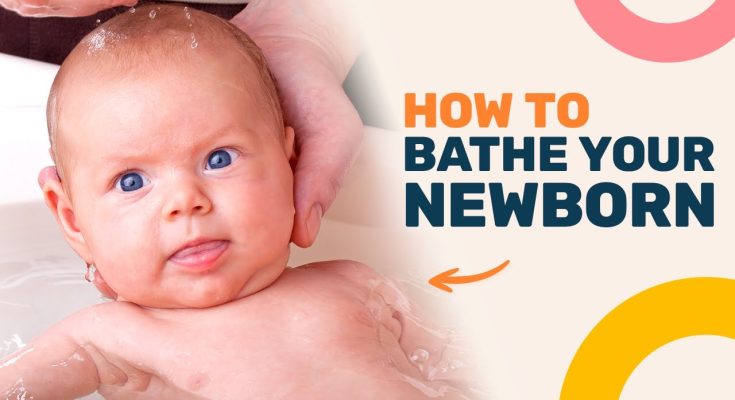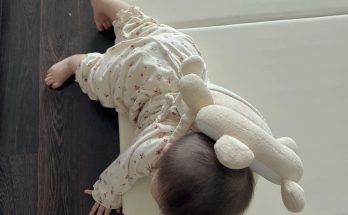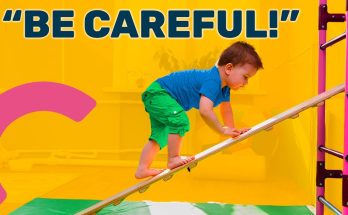Bathing a newborn for the first time can be both an exciting and nerve-wracking experience for new parents. Babies are delicate, and ensuring their safety, comfort, and cleanliness during bath time is essential. This guide will walk you through a step-by-step process on how to bathe your newborn safely and effectively.
When to Bathe a Newborn
In the first few weeks, newborns do not need daily baths. Three times a week is usually enough to keep them clean without drying out their delicate skin. However, daily sponge baths are recommended until the umbilical cord stump falls off. Once the umbilical stump has healed, you can transition to a tub bath.
Step-By-Step Guide to Bathing a Newborn
1. Gather All Supplies First
Before you start, make sure you have everything within arm’s reach. You should never leave your baby unattended, even for a moment. Gather the following supplies:
- A small, baby-safe bathtub or a clean sink
- Lukewarm water (about 98.6°F or 37°C)
- A soft washcloth
- A mild, fragrance-free baby soap and shampoo
- A cup or small jug for rinsing
- A soft baby towel (preferably with a hood)
- A clean diaper and clothes
- A soft baby brush (for gentle scalp massage)
2. Set Up a Safe and Warm Environment
Babies lose heat quickly, so make sure the room is warm—around 75-80°F (24-27°C). Close any windows and turn off fans or air conditioners to prevent drafts. Lay out everything you need, including a towel for drying your baby immediately after the bath.
3. Fill the Tub with Lukewarm Water
Fill the baby tub or sink with about 2-3 inches of lukewarm water. Test the water temperature with your wrist or elbow to ensure it’s warm but not hot. A bath thermometer can also help ensure safe water temperature.
4. Undress Your Baby and Clean Their Face First
Gently undress your baby, leaving the diaper on if they tend to pee when exposed to air. Start by wiping their face with a soft, damp washcloth—no soap is needed. Clean around the eyes with separate corners of the washcloth and gently wipe the rest of the face.
5. Place the Baby in the Tub
Support your baby’s head and neck with one hand while slowly lowering them into the water, feet first. Keep one hand under their head and back for support at all times.
6. Wash the Baby’s Body Gently
- Use a mild baby soap, applying it sparingly to a washcloth or your hands.
- Start with the neck and move downward, washing the arms, chest, tummy, and legs.
- Pay special attention to creases under the neck, armpits, and groin, where milk and sweat can accumulate.
- Wash the diaper area last, wiping from front to back.
7. Wash the Hair Last
- If your baby has hair, gently wet their head with a cup of water.
- Apply a drop of mild baby shampoo and massage it gently into the scalp.
- Use a cup to rinse their head, ensuring no soap gets into their eyes.
8. Rinse and Remove Your Baby from the Tub
Use a cup to gently pour clean water over your baby’s body to rinse off any soap. Once done, carefully lift your baby out of the tub, keeping a firm grip on their slippery body.
9. Dry and Moisturize the Baby’s Skin
- Immediately wrap your baby in a soft towel, gently patting them dry instead of rubbing.
- Pay attention to folds and creases, ensuring they are completely dry.
- If needed, apply a gentle, fragrance-free baby moisturizer to prevent dry skin.
10. Dress Your Baby and Keep Them Warm
Put on a clean diaper and dress your baby in warm, comfortable clothing. If it’s cold, a soft hat can help keep their body temperature stable.
Additional Tips for Bathing a Newborn
- Never Leave Your Baby Unattended: Always keep one hand on your baby and never step away from the bathing area, even for a second.
- Avoid Overbathing: Bathing too often can dry out the baby’s sensitive skin. Three times a week is enough.
- Use Mild and Fragrance-Free Products: Harsh soaps or scented shampoos can irritate delicate newborn skin.
- Be Gentle with the Umbilical Cord Stump: Until it falls off, keep it dry and avoid submerging it in water. A sponge bath is the best option in the first few weeks.
- Watch for Signs of Discomfort: If your baby seems cold, fussy, or uncomfortable, keep the bath brief.
Bathing your newborn is a wonderful bonding experience that promotes relaxation and hygiene. With practice, you will become more confident, making bath time an enjoyable ritual for both you and your baby!



